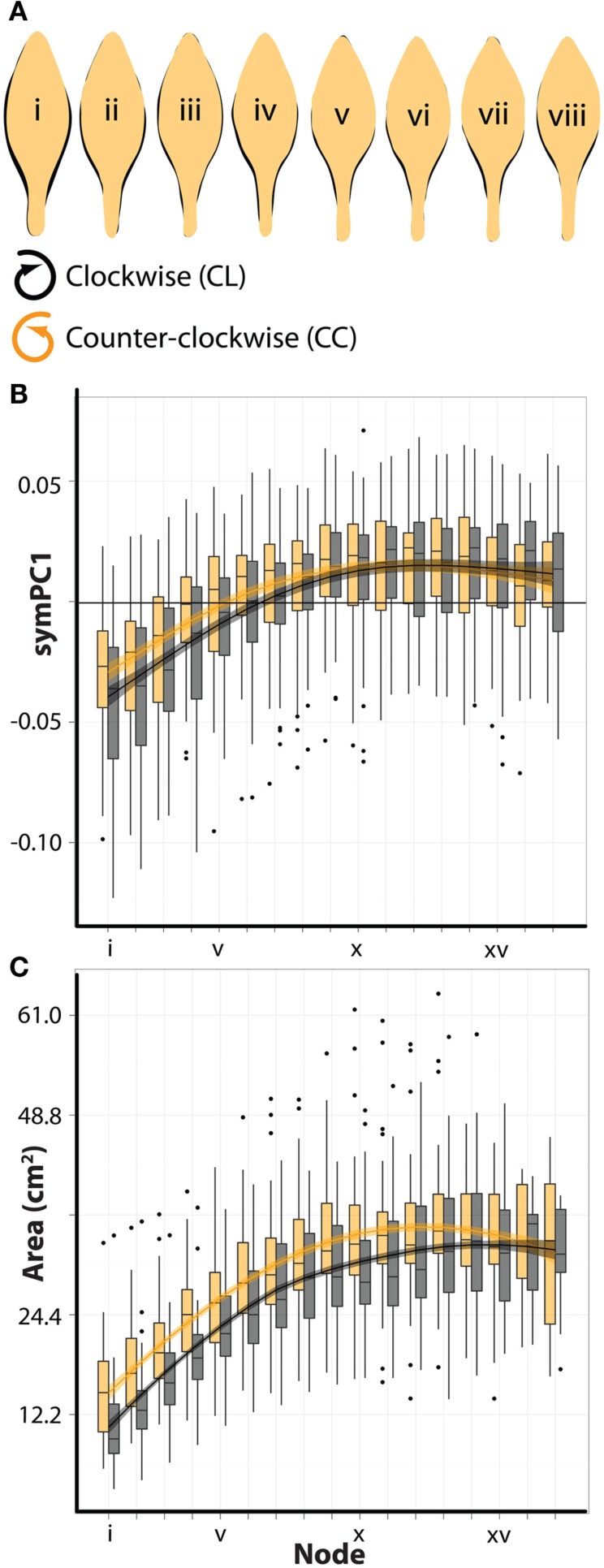Figure 6.
Counter-clockwise plants produce larger leaves with more developed shape characteristics. (A) Shown are juxtaposed mean outlines of abaxial-top leaves arising from clockwise (black, CL) and counter-clockwise (orange, CC) plants for the first eight nodes from the apex. Note that leaves arising from CC plants have more defined petioles and the distribution of their laminar outgrowth is shifted distally compared to leaves from CL plants – characteristics typical of more developed leaves found farther in the series (see Figure 2A). (B) symPC1 values for abaxial-top leaves separated by leaves arising from clockwise (black, CL) and counter-clockwise (orange, CC) plants. Superimposed upon barplots are loess regression lines with standard error bands. x-axis shows node position (lower values closer to the apex). CL symPC1 values are shifted right relative to CC values across the leaf series, suggesting a developmental delay. (C) Similar to (B), but showing the overall blade area (cm2) of leaves. Note again that CL leaves are shifted right relative to CC leaves, suggesting a developmental delay.

